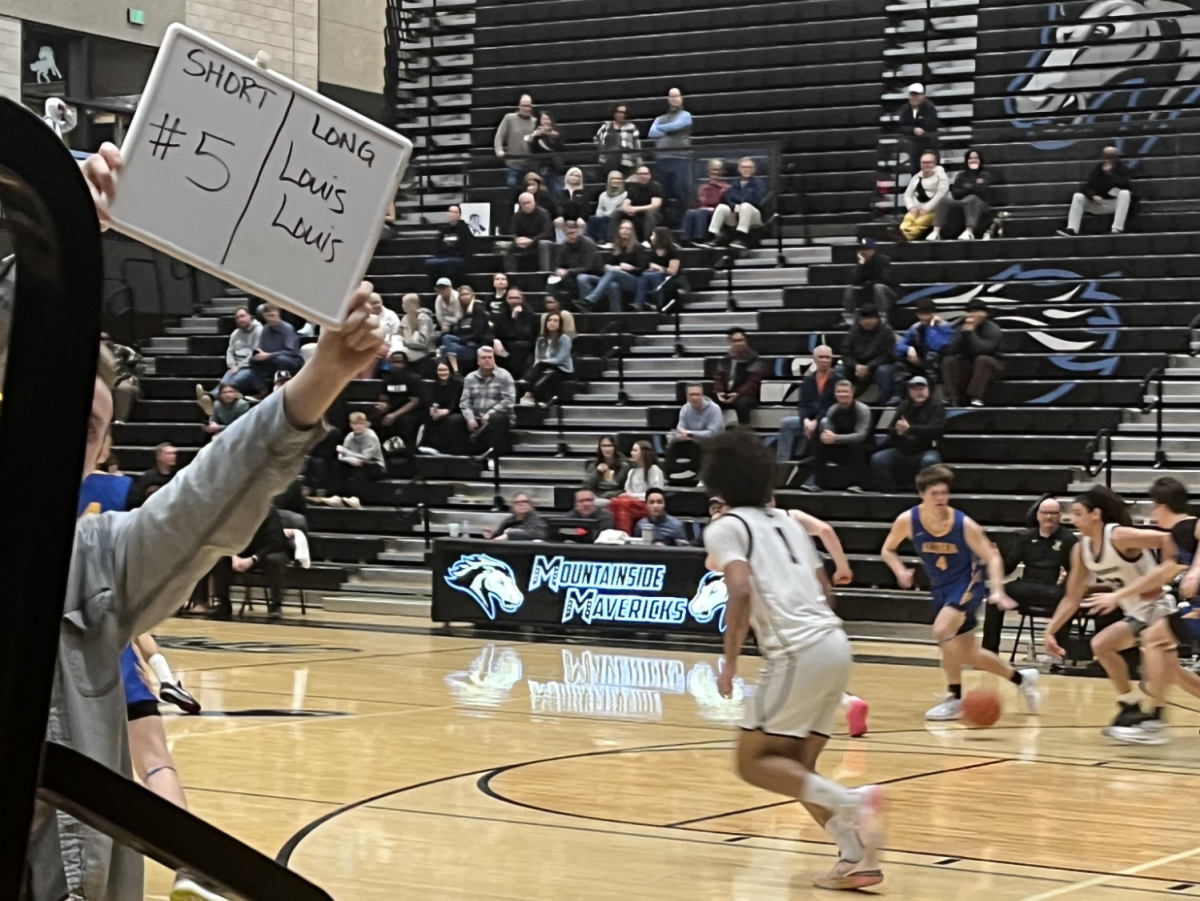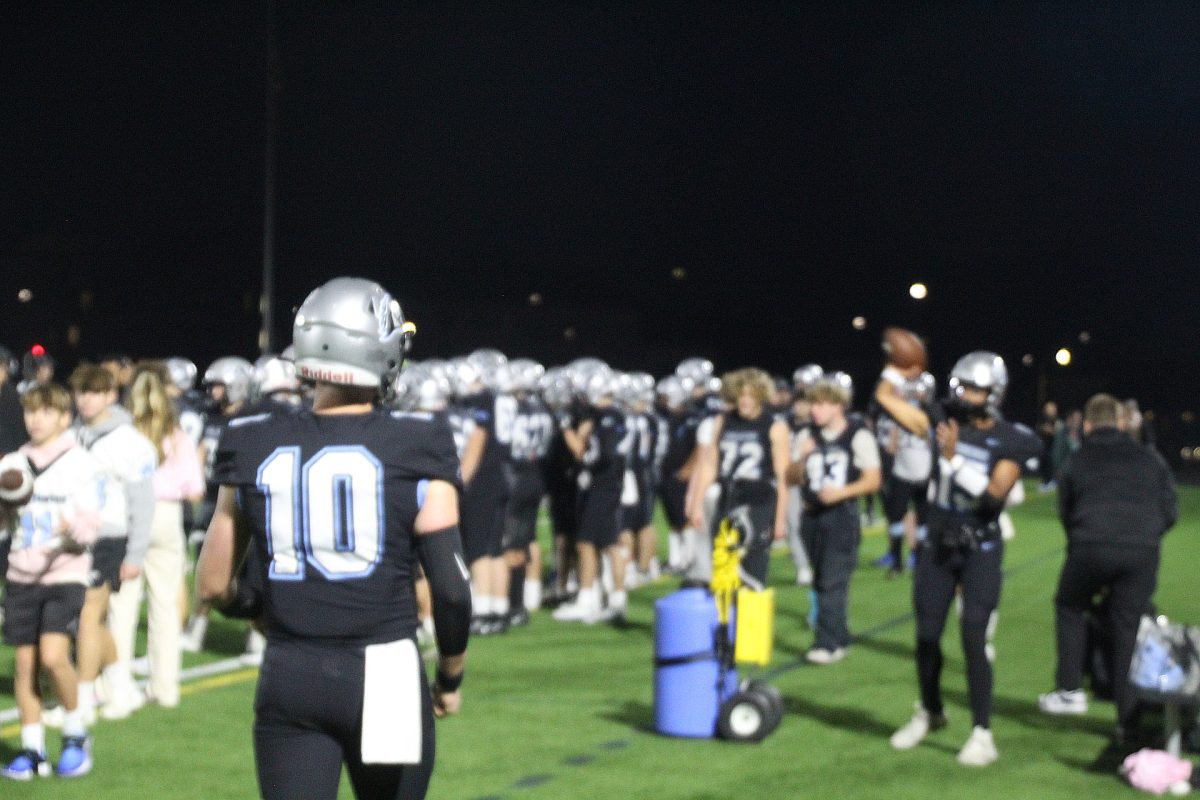Storming of the Capitol
Storming of the Capitol artwork (featured image) by Ty Kalestiantz
January 11, 2021
On January 6th, President Donald Trump spoke to thousands of his supporters, prompting them to march to the Capitol Building, eventually escalating into a riot that caused five deaths. This resulted in heavy turmoil and caused many to reflect on the state of America.
Since the election, Donald Trump has repeatedly made claims of voter fraud against the Biden campaign with no evidence to support this. His supporters agree; holding several marches and protests to “stop the steal”. Further into Trump’s speech, he testified, “this egregious assault on our democracy,” and continued to suggest they “walk down to the Capitol”.
The behavior seen at the Capitol was caused by brewing feelings, among many conservatives and far-right militia groups, finally reaching a boiling point. He beseeched them by saying: “… you will never take back our country in weakness.” Trump rallied up the group, who would eventually wreak havoc on the Capitol building.
Historical Context
It’s important to look into the history of the Capitol Building in order to understand just how monumental of an event this is. This isn’t just some old building politicians hold meetings at, this was the breach of a symbol of this nation’s democracy. The day of the storming, the building housed Congress, who were counting the electoral votes which would certify Joe Biden as the winner of the presidential race.
While there have been instances of violence throughout history, either in the Capitol Building or on the grounds, these were typically carried out by individuals or small groups of perpetrators. A breach of this scale hasn’t occurred since the War of 1812, when the British Military partially burned the building.
On a typical day, the Capitol Building facilitates the work of the United States Congress – the building for the Legislative branch of government. It is also the site of the presidential inauguration.
Responses of People in Power
“We will never give up, we will never concede” President Donald Trump said on Wednesday morning to his supporters, who gathered in front of the White House.
With the storming of the Capitol being live streamed for all of the world to view in real time, many others were able to share their feelings about the event, as it was unfolding; twitter, in particular, was bombarded with said feelings.
Chris Evans, an American Actor who has an immense following of 14.3M on the platform, shared his reactions in three short, somewhat cryptic bursts:
Evans, Chris (@ChrisEvans). “I’m Speechless” 6 January, 2021, 12:56 p.m. Tweet.
Evans, Chris (@ChrisEvans). “Just think of the carnage had they not been white.” 6 January, 2021, 1:10 p.m. Tweet.
Evans, Chris (@ChrisEvans). “So many people enable this.” 6 January, 2021, 1:14 p.m. Tweet.
Both Democratic and Republican senators have since condemned the riots at the Capitol. Chuck Schumer called the attackers domestic terrorists; Mitt Romney noted it was an insurrection; and even Mike Pence called it a “dark day in the history of the United States Capitol.”
Leaders outside the US also had much to say about what they witnessed. Boris Johnson stated on Twitter that “The United States stands for democracy around the world and it is now vital that there should be a peaceful and orderly transfer of power.” German Chancellor Angela Merkel was angered by the storming of the Capitol and condemned those responsible as attackers and rioters.
While reactions varied, it’s safe to say the American public was appalled by what occurred; and that many are embarrassed to have witnessed such an unsportsmanlike conclusion to the 2020 race.
Is this Fascism?
For a large duration of the Trump Presidency, especially within the last year, political commentators and activists alike have discussed their worries of the notable rise in fascist sentiment among this administration. Many Republicans find this theory laughable; some stating any evidence claiming President Trump is a facist dictator is taken out of context.
Most liberal new stations, such as MSNBC and CNN, emphasize the worry Americans should feel for Trump’s baseless claims of election fraud.
Almost all of the President’s court cases were dropped, and no real evidence was found that suggested the election was, in any way, fraudulent. Some Republicans agree with this standpoint, such as those working on The Bulwark Podcast and The Lincoln Project. Other Republicans, like Attorney Sidney Powell and Rudy Guiliani, fought to prove Trump had actually won.
Contrast in Response from BLM Protests
Many looked for answers, as the world watched the chaos unfold. However, what struck a nerve in federal officials, world leaders, and our very nation—beyond just the riots themselves—was the presidential response to it.
An insurrection comparable to what we saw yesterday hadn’t been seen for over 200 years. Yet to this, the President responded only through the form he knows best: Twitter.
“I am asking for everyone at the U.S. Capitol to remain peaceful. No violence!” The president tweeted on Wednesday. “Remember, WE are the Party of Law & Order — respect the law and our great men and women in blue. Thank you!”
This is in stark contrast to Trump’s Twitter response to the Black Lives Matter rioting in Portland, in July of 2020.
“Anarchists, Agitators or Protestors who vandalize or damage our Federal Courthouse in Portland, or any Federal Buildings in any of our Cities or States, will be prosecuted under our recently re-enacted Statues & Monuments Act,” tweeted Trump, in the midst of the outcry against police brutality. “MINIMUM TEN YEARS IN PRISON. Don’t do it!”
The juxtaposition is a discordant one. While many at the time shared the President’s opinion of the protesters for looting many large corporations like Target and Walmart, with a dimmer spotlight on the small businesses affected, a similar reaction is missing from many of that same demographic. It begs the question, what separates the “anarchists, agitators, or protesters” of July from the “party of law and order” last Wednesday?
Junior Madisyn Mitchell agrees. “It was an experience…this difference of how BLM protesters were treated [compared] to these rioters who with not even a small amount of resistance were able to raid the Capitol. It is a disgusting and horrible display.”
As Quartz put it in an article also discussing the contrast between Trump’s responses, the “group of insurrectionists” was “overwhelmingly white.”
It would be irresponsible for us, societally, to not acknowledge the implications of this. The observable truth that the color of yesterday’s rioters skin granted them a leniency not afforded to people of color. This distinction is a sharp reminder of the persistent existence of white supremacy in our current society, and how much work we have left to dismantle it.
Capitol Riot Charges
With thousands of Trump supporters scaling the walls, climbing the steps, and exploring the Capitol building, it’s become evident the extent of damage done physically and politically. With a lack of strong resistance, and minimal arrests, many have speculated the extent of punishment these intruders will receive.
Vice President Mike Pence tweeted, “Peaceful protest is the right of every American but this attack on our Capitol will not be tolerated and those involved will be prosecuted to the fullest extent of the law.” However, as of Jan. 7, approximately 68 arrests have been made, with only 1 of them being from D.C. Many have compared this amount to the arrests made on Jun. 1, 2020, at the peaceful protest for Black Lives Matter, amounting to 326 in one night.
Among comparably smaller charges, such as vandalism and assault of law enforcement officers, the riot member could be charged with major sentences. If the riot is proven to have intent of disrupting or dismantling government, then participants can be charged with sedition, which is punishable by fines and up to 20 years in prison.
Is this really a surprise?
“We’re going to walk down to the Capitol, and we’re going to cheer on our brave senators and congressmen and women, and we’re probably not going to be cheering so much for some of them,” Trump explained as he sent a message out to his supporters.
Liz Cheney, a Republican from Wyoming stated, “There’s no question that the President formed the mob. The President addressed the mob. He lit the flame.” His loyal supporters have crossed the line of legality to reassure his position of power is stable, going as far, if proven, as to undertake treason and, debatable, domestic terrorism.
Senior Sejal Dubey, shares this opinion. ”It was disturbing, frustrating, terrifying, but not surprising. I think that given the events of the last one year, and before, our generation has become desensitized to many of these events. Personally, I feel a heavy weight, and I feel exhausted, but there are much fewer things that I’ll find genuinely shocking.”.
Large executives of social media platforms such as Facebook and Twitter have allowed Trump and his allies to spread their untruthful statements and vigorous opinions about the 2020 election and topics such as voter fraud. Many of these platforms have recently taken action and banned Trump from their platforms, but there is only so much they can do to take down and control the posts of his allies.
Trump’s language has only become more provocative and less professional over time. Social media executives are only now choosing to take action and it isn’t enough. Over the course of his term the president has openly insulted multiple members of different groups. This isn’t his first time initiating violence and sharing his biased opinions.
Given how foreseeable this was, why were the Capitol Police so unprepared? They obviously knew about the possibility of a mass protest; but according to Chief of Police Steven Sund, that was all they had expected. In his statement, the following day, he mentioned that they already had a plan for possible “First Amendment activities,” but this clearly went beyond that. On top of this, there were specific incidents where officers allowed – some even encouraged – the rioting. There are videos of rioters being let in or out of the building, unopposed; as well as a video which seems to show an officer taking selfies with those same rioters. The problem clearly goes beyond lack of preparation – especially when talking about a group with a history of showing up to protests, armed – peacefully or otherwise.
“What happened was an example of domestic terrorism.” Junior Mya Lewis commented. “The so-called protesters were not attacking one political party but instead the American system that we are supposed to have our trust in. It was frustrating to see that so many people disgraced the nation and have no respect for it.”
Deaths in the Aftermath
A total of 5 people died in the frenzied Capitol riot. One of whom was shot during the chaos was named Ashli Babbitt, a veteran who was outspoken about her conservative political views via Twitter. She was 35 years old at the time of her death, which was caused by a bullet to the neck. She was described by her husband as a “staunch Trump supporter” and “a great patriot.” According to USA Today, “Graphic videos of the shooting show Babbitt wore a Trump flag as a cape as she tried to crawl through a broken window, flanked by other protesters. A single shot rang out, and she fell to the floor bleeding from an apparent neck wound.”
Medical emergencies took the lives of 3 others in the riot: 50-year-old Benjamin Phillips from Pennsylvania, 55-year-old Kevin Greeson from Alabama, 34-year-old Rosanne Boyland from Georgia, and 42-year-old Capitol police officer Brian Sicknick.
Police Chief Robert Contee III explained briefly how these other 3 people died. “They were on the grounds of the Capitol when they experienced the medical emergency,” he said to USA Today. The anxiety and chaos of the riot sparked overwhelming symptoms in their bodies, therefore causing these medical emergencies. Existing medical issues/delicacies made these people more prone to hazard in such an out of control situation.
For example, Phillips was killed by a stroke during the riot (though the time the stroke occured remains unclear).
According to Forbes, Greeson “died of a heart attack at an unknown point during the unrest, with his family saying in a statement released Thursday that Greeson had a history of high blood pressure and ‘in the midst of the excitement, suffered a heart attack.’”
Boyland’s death remains a mysterious “unknown medical emergency”, while Officer Sicknick died from injuries received from “physically engaging with protesters”.
Misinformation and Conflict
Trump, Donald (@realDonaldTrump) “Sorry, but the number of votes in the Swing States that we are talking about is VERY LARGE and totally OUTCOME DETERMINATIVE! Only the Democrats and some RINO’S would dare dispute this – even though they know it is true!” 3 January, 2021, 10:45 a.m. Tweet.
Navigating news within such a diverse media landscape can be challenging and often overwhelming. News is available within a single swipe, making it easier than ever to unknowingly come across, and subsequently, consume misinformation.
To have someone like Trump, who holds such a respected position and a massive number of supporters, use his platform to spread false claims and propaganda only instills more rage and enables violent acts, such as this very attack on the Capitol.
In the days following the inauguration of President-Elect Joe Biden, Democrats and Republicans alike expect more protests [and even more riots] to come.



































